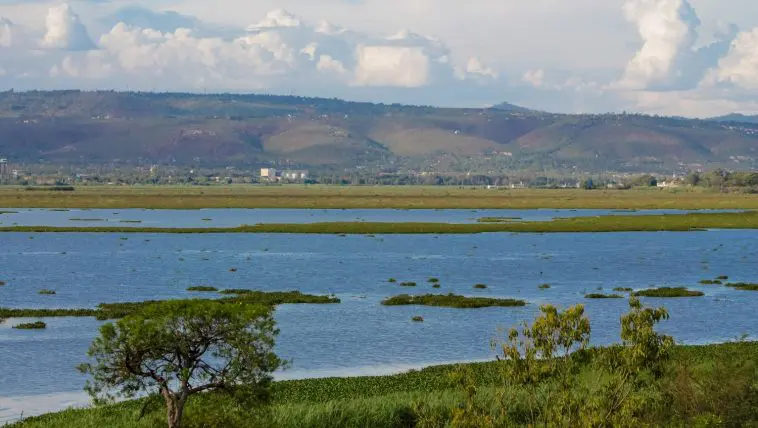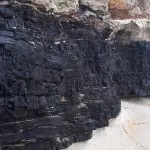[Originally published as Did apes make stone tools?]
You’ve probably seen the headlines declaring that Paranthropus made and used stone tools, and if not, your news aggregator probably isn’t tuned into “human evolution” stories like mine. The stories are referring to a newly published study of a very interesting site on the shore of Lake Victoria on the western edge of Kenya. Paranthropus is the new genus name for what used to be called the “robust australopithecines.” These creatures are characterized by their huge jaws, wide faces, and on some specimens, a sagittal crest like a gorilla. Studies of their teeth suggest that a large fraction of their diet was grass.
My own research has consistently shown that Paranthropus may be a separate created kind from both humans and other apes like Australopithecus afarensis, “Lucy.” So my take is that they’re not human.
For one of my recent research projects, I spent some time looking at stone tools in East Africa, and I came away from that with a healthy degree of skepticism. On the one hand, modern technology has allowed us to study stone tools in detail, and I’ve become more comfortable with the earliest stone tools known as true tools. These Oldowan tools are about as simple as you can imagine. They’re mostly rock cores and stone flakes, and it’s easy to imagine that these could be produced by any old monkey banging rocks together.
But with recent studies looking at microscopic edgeware on the flakes and identifying the residual materials on the tools, I’ve become more comfortable calling these rocks “tools.” The flakes were definitely used as cutters for a variety of materials, and the cores were percussive smashers for smashing things.
The big question is, who made them? In our modern world, chimpanzees are actually pretty clever at using materials from their environment as tools, and this behavior varies regionally. Is it possible then, that an ape-like Paranthropus might figure out how to bang rocks together and make sharp little flakes for cutting? I don’t know. Even though I accept them as tools, I still see Oldowan tools as extremely simple, the kind that I could imagine an ape figuring out. Maybe. I’m very unsure about this.
The problem as I see it is that there are lots of potential tool-making candidates living in East Africa. You’ve got at least two species of Paranthropus (aethiopicus and boisei), at least two species of australopith (Au. anamensis and Au. afarensis), multiple species of Homo (rudolfensis, habilis, erectus), Ardipithecus, and Kenyanthropus. And when you think about this from a young-age creationist perspective, you realize that these species may well be entirely contemporaneous since the “millions of years” they’re dated by conventional dating may amount to just a few years on the creationist timeline.
So when we find isolated collections of stone tools, who do they belong to? I don’t know. Frankly, I think this applies to the conventional timeline as well. The hominin fossil record is sparse enough that I’m pretty skeptical of anyone telling me that there are no whatever before some date. All that means is that we haven’t found those fossils yet, but Africa is a big, unexplored place. Only God knows what surprises are still in store.
This new site offers some really interesting new evidence that I think doesn’t make interpreting the stone tool record much easier. The new site called Nyayanga is a little gully that cuts through several layers of material, some of which contain fossils and stone tools. The researchers looked at two horizons in the lowest NY-1 layer, which they date to 2.5 – 3 million years ago by correlation of several methods (radiometric, paleomagnetic, biostratigraphic). The two horizons with tools and other remains were labeled excavations 3 and 5.
Altogether, they recovered 330 tools, 195 on the surface and 135 from the excavations. The tools are classical Oldowan tools, similar to those recovered from Olduvai Gorge. In excavation 3, they found one partial hippo skeleton closely associated with 42 stone tools. One rib fragment showed a pretty clear cut mark, and three of the associated flakes are worn down like they’ve been used a hard surface like bone.
In excavation 5, they found another partial hippo skeleton associated with 14 stone tools. Here, a tibia fragment has several very clear cut marks. The researchers also claim that the spatial arrangement of the bones and tools implies that someone (the tool maker?) had disturbed the skeleton. They also found other bones at the site that had damage from either cutting or smashing with stone tools. Finally, they found two large hominin teeth, one a surface find and the other from excavation 3 closely associated with the cut hippo skeleton and stone tools. The teeth are probably molars and larger than any Paranthropus molars in their comparative sample.
Like Paranthropus teeth, these teeth appear to have been used to eat lots of grass. They suggest that the close association of the tooth, stone tools, and cut-marked hippo bone in excavation 3 might support the inference that Paranthropus was a toolmaker and hippo butcher, but they also admit that it could have been another hominin altogether.
What should we make of this site?
Could it be that Paranthropus smashed rocks together and used a couple of flakes to cut on a hippo carcass they found? I suppose that’s possible. Apes are pretty clever, after all.
Could it be that a true human being made these instead? It’s possible. All we have are a handful of cut marks on a couple of bones, very simple stone tools, and a few teeth.
With such sparse evidence, it’s really, really, really hard to be sure.
As always, please check out the original research report. Don’t take my word for it.
Footnote
Plummer et al. 2023. Expanded geographic distribution and dietary strategies of the earliest Oldowan hominins and Paranthropus. Science 379:561-566.







